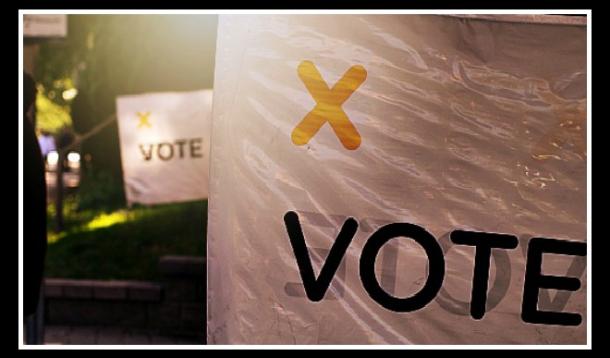
It's election time! If you hadn't yet noticed the television advertisements, attack ads, candidate interviews, lawn signs, buttons, polls, protests, and voting cards you are not alone.
"Huh? There’s an election?"
Voter turnout in the 2011 Canadian election was a dismal 61.1%. Bluntly: nearly half of this country didn’t decide who runs this place, and how.
“Voting is just a big hassle, because…"
"I don’t know what the parties stand for. I haven’t read any of the platforms."
"My vote doesn’t matter. It doesn’t make a difference anyway."
"The system is broken - I make my voice heard by not voting. It’s my form of protest."
"All the choices are the same."
"I don't have anyone to watch the kids on Election Day."
Reality check: People die for the right to vote. They die for the right to decide who “makes the rules” we all live by: who runs their country, and how. Busy lives, scheduling conflicts, and a lack of or confusing information can all be barriers to voting – but, these are all easy to overcome.
With no legitimate excuse left to hide under, here are five simple tricks to make voting easy:
Advance polls are one of the ways Elections Canada has tried to increase voter turnout. And it works! With additional, convenient, opportunities to vote – sooner, and closer to home - it gives even the busiest families more chances to make their choice.
If you are travelling on Election Day, you can also vote at your local Elections Canada office (ANY day during the election period), or by mail.
Many people are already on the voters list, and a voting card will arrive in your mailbox with the location(s) where you are able to vote. If your voter card doesn’t arrive, you can also visit the Elections Canada website where you can punch in your address and find out where your polling station is.
Find out where you vote before Election Day to reduce planning stress, and increase your chances of making time to cast your ballot.
If you don’t receive a voting card, there is a chance you might not be on the voters list. This is not the time to panic. This does NOT mean you can’t vote in the election.
You can vote if you:
Elections Canada has a comprehensive list of the ID you need to prove your identity and your address. You can:
1) Show one of: driver's license, provincial/ territorial ID card, or any other government card with your photo, name and current address.
2) Show two of: (full list here) health card, Canadian passport, birth certificate, certificate of Canadian citizenship, student identity card, bank statement, credit union statement, credit card statement, etc.…the list is long, but the idea simple: you must prove who you are and where you live.
3) Take an oath (If your ID does not have your current address).
Knowing whether you can duck into the polling station before work, or if you have to line up after work (but between dinner and ballet practice) will remove scheduling stress from voting during a workday. Polls are open for twelve hours on Election Day – the equivalent of twenty-four coffee breaks, so there’s no room for excuses.
Talk to your employer about taking time during the workday when the lineups at polling stations are smaller – it’s your right to vote on Election Day.
A basic web search will tell you what each of the major parties stands for. There are some fun web surveys that help suggest how to vote, based on your answers to questions like: “How many new immigrants should Canada admit?”
By organizing your ballot-casting ahead of time, you can determine what kind of childcare coverage you might need - if any.
Bringing younger children to the polls isn’t a problem. In the event of lineups — those lines are filled with interesting faces, and lots of families. For older children, seeing their parent vote is one of the best ways to encourage them to take up the torch on this exciting responsibility. This MacLean’s article supports the asserting that preventing low voter turnout should start as early as elementary school!
Bringing your child to the polls means raising a voter: someone who cares about who runs this country, and how. Now, tune in to the election results. You’ve earned the glorious right to complain about government until the next election.
![]() RELATED: Election Day - Take Your Kids
RELATED: Election Day - Take Your Kids